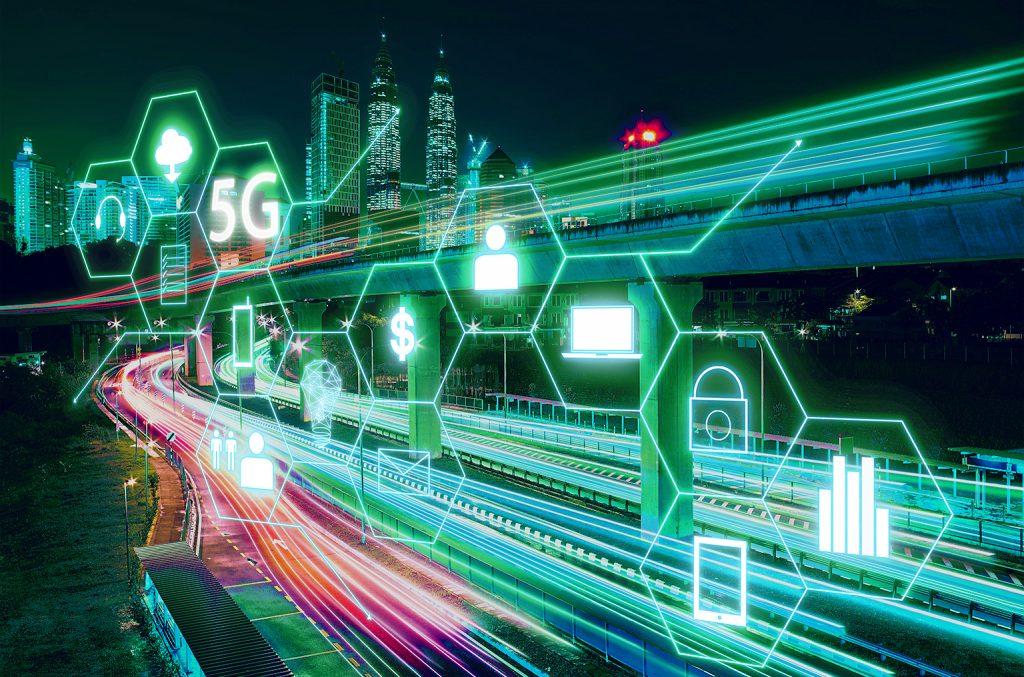5G, Edge Computing and the Cloud
What is 5G?
The fifth generation of wireless network technology is not another G but a transformative technology that will make the real-time edge and IoT solutions a reality. 5G is the first technology that strengthens the role of the network in the IT environment. It focuses on the data in the network and not the devices. That approach, coupled with nimble latencies, enables linking edge compute and cloud apps to deliver new real-time services to consumers and businesses.
How fast is 5G?
We’ve all heard about the superfast 5G speeds, but most of us have not seen those blazing fast speeds in action. For the average mobile device user, 5G may appear similar to older generations. Things are very different when large files or latency-sensitive applications are involved. Low latencies and high-speed communications are vital for real-time applications such as factory floor automation and self-driving cars. Without the low latency and high speed 5G, it is hard to see self-driving cars becoming a reality. The last thing anyone wants is to have their car run into a wall while waiting for data on a slow network.
The graphs below show comparisons of the downloading speeds of three generations of wireless networks.

Benefits of 5G
Sometimes 5G is seen as a cure-all, but that is never the case. The new technology moves real-time solutions forward by offering low latency, bandwidth splicing, higher speed and better security.
Bandwidth splicing, in particular, is a cool feature. It allows the provider to dedicate a portion of the bandwidth to specific activities. For example, you can make an important phone call while attending a tennis tournament, even when all the fans are loading videos to their social media channels. All the video traffic will use a portion of the 5G bandwidth without infringing on your ability to make a simple phone call.
Security is not frequently mentioned in connection with 5G, although 5G enhances security by eliminating the middleman, Wi-Fi. There are fewer ports of entry for bad actors.
Edge computing is the area where 5G will most impact remote workers and distance learners—just in time for the work-from-home economy. Edge computing will translate into smaller data centers with cloud servers located in the same metro areas where most users are. The benefit is that when sending or receiving data from the cloud, a user will be communicating with a cloud server that is close to them, responding much faster than servers located thousands of miles away. Edge computing means higher performance apps, a more responsive cloud and more satisfied customers.
Real-time high-speed bandwidth and low latency will enable two important digital economy segments: factory floors and self-driving vehicles. Factory floors will benefit from faster speeds and high bandwidth to automate processes wirelessly without mountains of cables. Factories will also be able to utilize higher resolution images for better quality control.
The last generations of wireless networks could not meet autonomous vehicle real-time needs for low latencies, high bandwidth and faster interconnects. 5G provides the infrastructure needed to move autonomous vehicles forward.
Use cases of 5G
Remote workforce and distance learning. With lower latencies, adequate bandwidth and high-performance networks, students can learn remotely without the frustrating delays and lag everyone experiences today. 5G will turn the distance learning experience into an excellent simultaneous exercise with all participants being on the same page.
Real-time factory floor automation. Enterprises will be able to transform their production floors into safer spaces free of the jungles of cables. Production lines will also produce higher quality products faster with fewer defects using high-resolution imaging for automated quality inspection and control. Companies will also see a more efficient supply chain due to adopting faster 5G networks to communicate with the right suppliers using factory floor data.
Edge cloud. In some sense, 5G brings the cloud closer to users instead of sending applications to clouds that are thousands of miles away. The high-speed networking and abundant bandwidth make it possible for service providers to install small cloud data centers in the metro areas where users and customers live and work. This capability improves apps’ response time, enhances remote employees’ productivity and keeps customers happy with very low latencies.
Autonomous vehicles. User safety is always of paramount importance. Autonomous cars are a use case where the good low latency, bandwidth and high networking speeds deliver safer and more responsive vehicles. Responsive and more intelligent vehicles can make the roads safer for all.
Next steps
5G is a revolutionary technology that enhances the central role of the network in our lives. It ushers a new era of real-time applications that will propel the global digital data economy forward. Latency-sensitive applications, including autonomous vehicles, telemedicine and factory floor automation, will become a reality. Taking advantage of 5G’s bandwidth slicing, one will make important phone calls during events even when others are streaming video on social media. The best news is the 5G simplifies endpoint connectivity and sets the stage for 6G and the next wave of progress.
